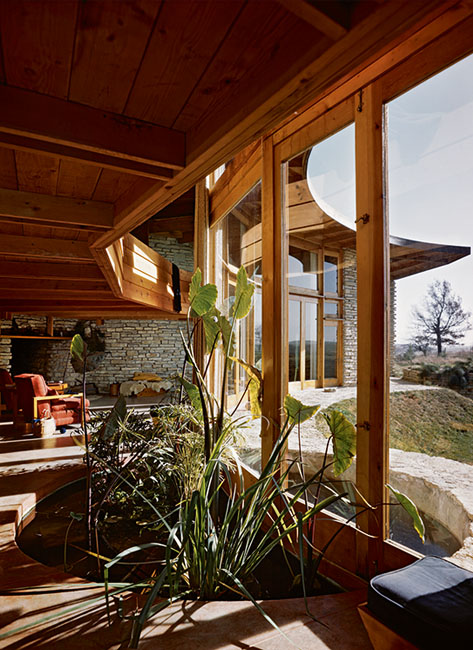Wisconsin Frank Lloyd Wright
DOI:
https://doi.org/10.7480/dash.07.4720Samenvatting
In 1936, tijdens de Grote Depressie, benaderden Herbert en Katherine Jacobs architect Frank Lloyd Wright met de vraag om voor hen een huis te ontwerpen met een bouwkostenbudget van slechts 5.000 dollar. Wright greep deze vraag aan om zijn ideeën voor een betaalbare woning te realiseren. Het resultaat, het briljante, tot in het laatste detail ontworpen Jacobs House in Madison, Wisconsin, werd als eerste Usonian het beginpunt van een lange reeks door Wright ontworpen woonhuizen. Deze Usonians (Wright hanteerde vanaf 1927 het woord Usonia als aanduiding voor de Verenigde Staten van Amerika) varieerden steeds opnieuw op de ruimtelijke organisatie, het materiaalgebruik en de detaillering van het eerste Jacobs House. Tot Wright’s ontzetting werd dit huis zes jaar na voltooiing al verkocht door de Jacobs en vertrokken zij naar een boerderij buiten de stad.
Eind 1943 presenteerde Wright hen een ontwerp voor een nieuw woonhuis ter vervanging van deze boerderij. Het ontwerp was een lineaire versie van het Usonian huis, met een dubbelhoge woonruimte en een door middel van een pergola met het woonhuis verbonden stal. Herbert en Katherine Jacobs reageerden afwijzend: het ontwerp was te kostbaar, de opzet te formeel en er was geen rekening gehouden met de koude zuidwesten wind. In februari 1944 volgde een geheel ander voorstel, in Wright’s woorden: ‘another first’. Het meest opvallende aspect van dit ontwerp was de, op basis van in elkaar grijpende cirkels opgezette plattegrond, een opzet verwant met het ontwerp voor het Guggenheim museum dat tegelijkertijd door Wright werd ontworpen.
Rondom een ronde verzonken tuin ligt een gebogen huis dat een derde cirkel beschrijft. De gesloten stenen buitenwand wordt doorbroken door een kleiner rond volume waarin zich de trap en sanitaire ruimten bevinden. De gevel langs de verzonken tuin is op het zuiden gericht en geheel opgebouwd uit houten puien met glas. Deze gevel wordt ook doorbroken door een cirkelvorm: een rond bassin dat van binnen naar buiten doorloopt. Tegen de stenen buitenwand is een 4 m hoge aarden wal opgeworpen, die het huis moet beschermen tegen de wind. De voordeur, in de puiengevel, wordt bereikt door een onderdoorgang dwars door de aarden wal. De woonruimte in het huis is dubbelhoog. Een mezzanine is opgelegd in de stenen muur en vervolgens met trekstangen aan het dak opgehangen. De tussenvloer blijft zo vrij van de doorgaande glazen zuidgevel. Het platte dak ligt met een groot overstek over de puien heen; ’s zomers voorkomt het overmatige zoninval en in de winter dringt de zon juist diep in het huis door.



